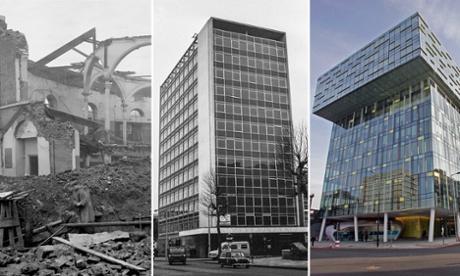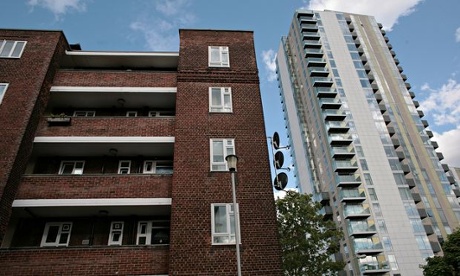Commentators often point to parallels between the current era and the 1930s – whether they are discussing geopolitics, state benefits or even “alternative facts”.
There are many striking similarities, but significant differences, too – as the Guardian’s special focus on the 1930s will demonstrate, by re-examining the key events, disputes and cultural trends of what the poet WH Auden termed “a low, dishonest decade”.
In Britain, the Great Depression led to record unemployment, mainly in north-east England, the Scottish lowlands and the mining villages of south Wales. With nearly 4 million out of work, these regional variations deepened the existing wealth divide between north and south – which continues to this day.
This lasting division underpins some of the most iconic images of the 30s: photographs of “hunger marches”, in which unemployed men and women trekked from Britain’s distressed areas to London to make southerners aware of the dire conditions under which they lived, and the seeming inability of the government to do anything about alleviating them (the prime minister Ramsay MacDonald refused to accept the marchers’ petitions).
Workers’ unemployment benefits were cut off after six months, and the harshest measure of all was the means test, introduced in 1931. If a family could not afford to pay the rent, their furniture and other assets would be seized.
Although there is no formal means test today in Britain, benefits not based on national insurance contributions are still assessed on a household’s income and are being cut back on a considerable scale.
In the 30s, Britain’s medical safety net – the NHS – was still a distant dream. If you were ill, you had to go to a “panel” doctor if you were eligible, or see a sixpenny doctor who would treat you for a fee. Cottage hospitals were chronically underfunded and under-resourced, and had to rely on donations and “flag days”.
In 1937, only about 4 million manual workers were entitled to a holiday with pay, out of a total workforce of 18.5 million. The Holiday With Pay Act the following year extended these rights. For the lucky few, this meant a week at a seaside resort; for the rest, day trips with a picnic – travelling by car, Greenline bus or motorcycle (with sidecar) to stay in a holiday camp or a boarding house, where guests were obliged to go out after breakfast and stay out until supper time. Only the very wealthy could afford foreign holidays.
In 1936, many young and idealistic British men did, though, ignore a government ban and travel to Spain to fight for the republican army against the fascist leader General Franco.
The countdown to another world war, and the proliferation of home appliances such as washing machines, dishwashers and efficient vacuum cleaners, led to a huge change in women’s lives – helping them to take up employment outside the home. In the 30s, however, the average young woman was still married straight from her parents’ house, while divorce was usually too costly for working-class couples: they simply separated.
Abortion was illegal, so those who could afford to do so went to an “osteopath” or similarly misnamed doctor. For the poor, the options were drinking gin in a boiling hot bath, or seeking a backstreet abortion by a woman – probably with no training – working in insanitary conditions.
Housing was a seemingly intractable problem in the 30s, just as today. Then, the most urgent need was demolishing thousands of overcrowded, vermin-infested slums. This slow task was effectively completed in many cities in 1940-41 by German bombers, by which time the building of a large number of houses in the suburbs had enabled many more middle-class Britons to own property.
Today, the shortage of of what is called affordable accommodation remains one of Britain’s most pressing problems.
By the 1930s, cinema had taken over from theatre and music halls as the most popular entertainment. By 1938, there were 4,967 cinemas, some huge: Green’s Playhouse in Glasgow could accommodate more than 4,300 people . Most of these new cinemas were works of art, decorated to look like an exotic tropical islands, Mediterranean resorts or Egyptian tombs.
More than 900m cinema tickets were sold in 1934, rising to an annual of 990m by the time war broke out – a staggering average of nearly 20m viewings per week. Dancing, too, was a regular night out, whether in intimate nightclubs or famous concert arenas. Most of those beloved dance halls are long gone, having become bingo halls, which are themselves now struggling to survive.
Despite all the dancing, many young men were not fit for military service because of malnutrition and the impact of appalling living conditions. Britain’s poor performance at the Olympic Games in 1936 instigated a nationwide keep-fit campaign, with local authorities encouraged to make land available for outdoor activities. At least 130 swimming lidos were built in Britain between 1930 and 1939.
Today, the cult of keeping fit is still manifest in the number of gyms and exercise classes all over the country – although one aspect of the fitness craze has not generally been kept up. In the 30s, a number of young men and women took to naked rambling in the countryside at weekends: open-air nudism was considered an excellent path to health.
In this, perhaps, and in other, more serious ways, we should be grateful that, for all their similarities, the differences between the two eras remain marked.
Juliet Gardiner is the author of The Thirties: An Intimate History
• This article was amended on 10 March 2017 to clarify that Ramsay MacDonald was not a Labour prime minister when he refused to accept the hunger marchers’ petition in 1932.










